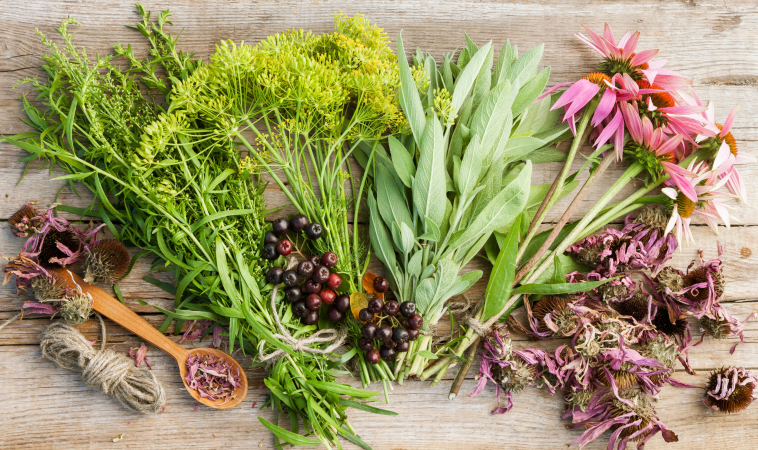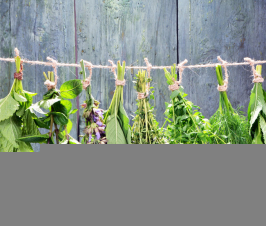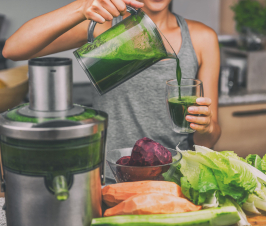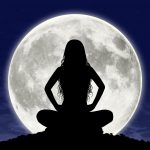Over the holidays, my friend and I went to a Christmas market. As we looked at and sampled an array of products ranging from gluten free cookies, handmade soaps, pashminas, to plants, I came upon this woman who was selling teas. She had simple teas with just a few types of flowers in them and they smelt wonderful. On the label, she wrote “anti-aging” tea. I thought to myself, that’s a pretty big claim. I looked at the ingredients – rosemary and rose. I proceeded to ask her which of the ingredients were anti-aging and she said, “Rosemary is anti-aging”. I wasn’t especially convinced by her evidence.
At another stand in the same market, a man was selling all natural deodorant with citrus or lavender and my friend (not a naturopath), asked the man how it works and he responded, “oh, I don’t really know the answer to that”.
What does that label actually mean?
Inevitably, natural health products are everywhere and it’s often tempting to take your wallet out to buy these wonderful “all-natural”, “organic” products that will make your skin look great but before you take out your wallet to buy it, make sure that it’s from a good, credible source. Make sure that their “all-natural” and “organic” claims are certified. Make sure that there is research to support the use of the formulation or product. Make sure that the product has the potential to live up to its mighty health claims. Be critical of what you read, see and are told. Has rosemary been used traditionally for anti-aging? Has it been prepared in the right away to have anti-aging effects? Is the right part of the plant being used?
By using different parts of an herb, or using a different technique to prepare the herb, the same herb can have multiple effects on the body. Rosemary has traditionally been used for hair loss and poor blood circulation and digestion, among others concerns1. Rosemary essential oil is best for hair loss, whereas a tea is used for poor digestion, and for poor blood circulation, a tincture should be used1. Dandelion leaves are often used in salads, and juices for detox due to its diuretic effect whereas roots are used for digestive issues2. Formulating an herbal product requires a lot of knowledge, experience and expertise.
In addition to knowing which part of an herb to use, it is also extremely important to know the best way to prepare an herb or mixture of herbs. Most commonly, herbs are used to make a nice cup of tea. Even then, there are two ways to make a cup of tea – an infusion or a decoction. An infusion is how most of us make tea, simply using fresh herb or a tea bag and adding hot water and just letting it sit for 10-15 minutes before drinking1. This is great for softer herbs like chamomile, or lavender flowers1. A decoction is needed for parts of herbs that are hardier, such as dried bark, or roots. In a decoction, the herbs and water are added to a pot. The mixture is boiled and let to simmer then strained1. A tincture is much more complicated to make. To make a tincture, an alcohol is used to extract specific, desired chemical compounds from a plant. Because specific chemical compounds are being extracted, companies need to standardize these compounds to a specific concentration. When buying a tincture, it’s important to make sure that the company is reputable and is doing testing to ensure a quality product.
Each type of plant is unique and has its own chemical fingerprint, determined by its unique chemical composition3. By performing the necessary testing, companies determine and analyze fingerprints of all the plants collected to ensure that they have the plant that they want3. This is extremely important as plants can often be adulterated, where an herb is partially or completely substituted3. Adulteration of plants can be intentional or unintentional3. Plants with very different chemical profiles may be mistaken for each other because they belong to the same family and look very similar. The difference in chemical profile could mean that a plant no longer has a desired effect. Chemical profiling can also help to identify contaminants such as heavy metals, and pesticide residues3. As herbal products are often taken for prolonged periods of time, heavy metals can accumulate in the body and lead to various symptoms including, fatigue4, seizures4, skin rashes5 and specific organ damage or dysfunction4.
It’s always best to get a natural health product from someone with training, a naturopath, or an herbalist. Make sure that when you are buying an herbal product with associated health claims, that they are valid and supported by research. Make sure that you are buying herbal products from a reputable source, where testing is done to confirm the identity of the herbs in a product. Many people turn to herbal products because they believe that they are safe and have fewer side effects than pharmaceutical products. Even so, it is important to take your own precautions as a consumer. Despite the immense value of plants in the medicinal world, plants can still harm your body when herbs are not used properly, adulterated or contaminated with impurities such as heavy metals, and pesticide residues.
Simple Questions to Ask
- Where was the product was made?
- Who designed or formulated the product? Are they credible?
- Have they been trained? Do they have a rationale for the way they designed their product?
- What quality control is there?
- What’s the research behind the product?
Resources
A great resource to see if a natural health product is allowed in Canada is the Licensed Natural Health Products Database6.This database is managed by Health Canada. On your product, look for the Natural Product Number (NPN) or the Homeopathic Medicine Number (DIN-HM).
 Dr. Olisa Mak is a licensed ND with a general family practice in downtown Vancouver. She has a special interest in bringing awareness to the mind-body connection using homeopathy, botanicals and lifestyle counseling.
Dr. Olisa Mak is a licensed ND with a general family practice in downtown Vancouver. She has a special interest in bringing awareness to the mind-body connection using homeopathy, botanicals and lifestyle counseling.
She is driven to educate, inspire and empower those around her. Everyone has the potential to achieve their dreams and goals but are often unable to because of their fears, perceptions, and circumstances. Dr. Mak strives to work with her patients to remove barriers, empowering patients to seize opportunities and to make the life they want a reality.
References:
- Hoffmann D. Medical Herbalism. Rochester, Vt.: Healing Arts Press; 2003.
- Bone K. A Clinical Guide To Blending Liquid Herbs. Edinburgh [u.a.]: Churchill Livingstone; 2003.
- Ahmad I, Aqil F, Owais M. Modern Phytomedicine. Weinheim: Wiley-VCH; 2006.
- Amster E, Tiwary A, Schenker M. Case Report: Potential Arsenic Toxicosis Secondary to Herbal Kelp Supplement. Environ Health Perspect. 2007;115(4):606-608. doi:10.1289/ehp.9495.
- Ernst E. Toxic heavy metals and undeclared drugs in Asian herbal medicines. Trends in Pharmacological Sciences. 2002;23(3):136-139. doi:10.1016/s0165-6147(00)01972-6.
- Hc-sc.gc.ca. Natural and Non-prescription Health Products – Drugs and Health Products – Main Page – Health Canada. 2016. Available at: http://www.hc-sc.gc.ca/dhp-mps/prodnatur/index-eng.php. Accessed January 25, 2016.

















